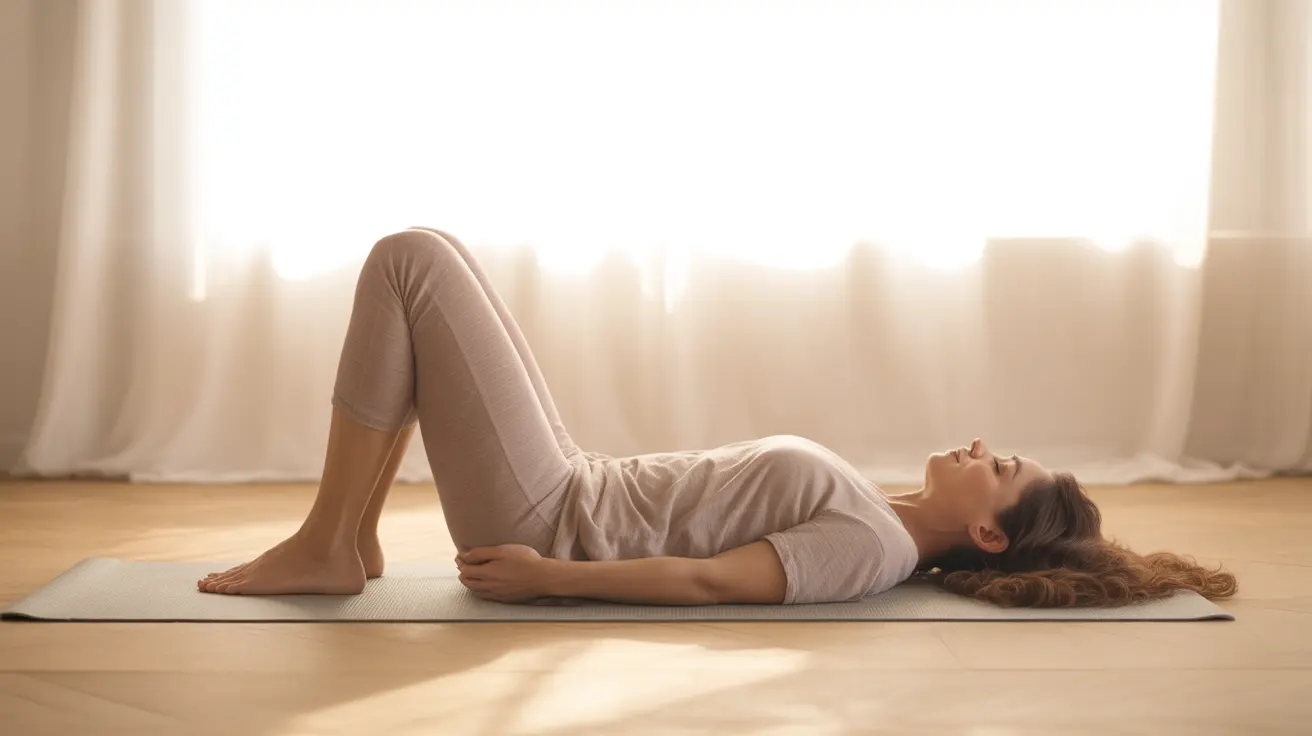Understanding how to properly relax your pelvic floor muscles is just as important as knowing how to strengthen them. Reverse Kegels, sometimes called releasing Kegels or pelvic floor drops, are exercises designed to help you consciously relax and lengthen these important muscles. This guide will help you understand what reverse Kegels are, their benefits, and how to perform them correctly.
Understanding Reverse Kegels and Their Importance
Reverse Kegels work by teaching you to consciously relax and lengthen your pelvic floor muscles, which can become too tight or tense from stress, physical activity, or overtraining with traditional Kegel exercises. These muscles form a hammock-like structure supporting your pelvic organs and play a crucial role in bladder control, sexual function, and core stability.
While traditional Kegels focus on strengthening and tightening these muscles, reverse Kegels help maintain proper muscle balance by promoting relaxation and flexibility. This balance is essential for optimal pelvic health and function.
Benefits of Reverse Kegel Exercises
Regular practice of reverse Kegels can offer numerous health benefits:
- Relief from pelvic tension and discomfort
- Improved bowel and bladder function
- Better sexual function and comfort
- Reduced symptoms of pelvic floor dysfunction
- Enhanced muscle coordination and control
- Prevention of pelvic floor overactivity
How to Perform Reverse Kegels Correctly
Follow these steps to properly execute reverse Kegel exercises:
Starting Position
Start by finding a comfortable position, either lying down, sitting, or standing. Many beginners find it easier to learn while lying down with knees bent and feet flat on the floor.
Breathing Technique
Focus on deep, diaphragmatic breathing. As you inhale, imagine your pelvic floor gently expanding and dropping downward. With each exhale, maintain this relaxed state without forcing or straining.
The Release
Think of your pelvic floor muscles lengthening and widening, like an umbrella opening up or an elevator slowly descending. Avoid pushing or bearing down, as this can strain the muscles.
Incorporating Reverse Kegels Into Your Routine
Start with short sessions of 5-10 seconds, gradually increasing duration as you become more comfortable with the technique. Aim to practice 2-3 times daily, but listen to your body and adjust according to your needs and comfort level.
Common Mistakes to Avoid
Be aware of these common errors when practicing reverse Kegels:
- Pushing or straining instead of gentle releasing
- Holding your breath during the exercise
- Tensing other muscles (abdomen, buttocks, or thighs)
- Practicing too intensely or too frequently
- Not maintaining proper posture
Frequently Asked Questions
What are reverse Kegels, and how do they help with pelvic floor relaxation?
Reverse Kegels are exercises that teach you to consciously relax and lengthen your pelvic floor muscles. They help balance muscle tension, improve flexibility, and promote better pelvic function by counteracting excessive tightness or tension in the pelvic floor.
How do I perform reverse Kegels correctly, and what are the benefits for my pelvic health?
To perform reverse Kegels, focus on gentle muscle lengthening while breathing deeply. Benefits include improved muscle coordination, reduced pelvic tension, better bowel and bladder function, and enhanced sexual comfort.
Can reverse Kegels help alleviate chronic pelvic pain or constipation, and how often should I practice them?
Yes, reverse Kegels can help manage chronic pelvic pain and constipation by releasing muscle tension. Practice 2-3 times daily, starting with 5-10 second holds and gradually increasing duration as comfortable.
What is the difference between performing traditional Kegels and reverse Kegels, and which one is right for me?
Traditional Kegels focus on contracting and strengthening pelvic floor muscles, while reverse Kegels emphasize relaxation and lengthening. Most people benefit from incorporating both types of exercises for optimal pelvic health, but consult a healthcare provider for personalized guidance.
Are reverse Kegels safe for everyone, or are there specific conditions where they should be avoided?
While reverse Kegels are generally safe, individuals with certain pelvic floor conditions should consult a healthcare provider before starting. This is particularly important for those with prolapse, recent surgery, or active pelvic floor dysfunction.




